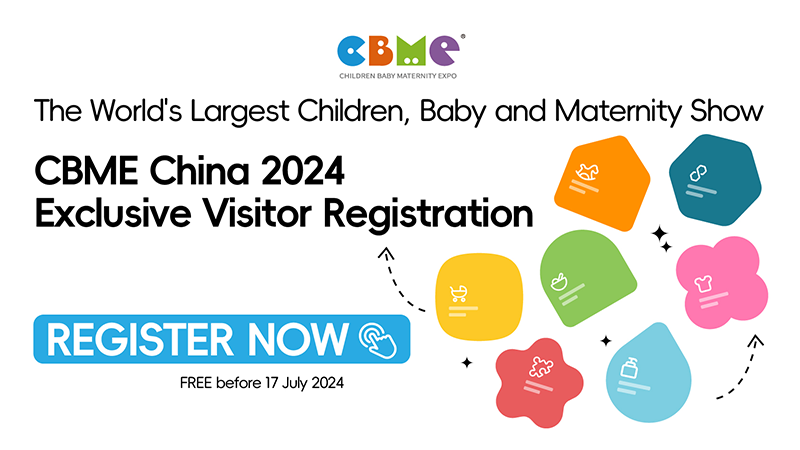Overview of the 2024 CBME Maternity, Baby & Child Industry Summit
Recently, at the “2024 CBME Maternity, Baby & Child Industry Summit—Navigating China’s Fourth Era of Consumption,” the CBME released its pivotal “2024 China Maternity, Baby & Child Retail Market Report.” Xiaoyuan Gu, General Manager of Informa Markets China (Hangzhou), highlighted that the mother and baby product channel in China is uniquely robust compared to other global markets, making it an essential focus for ongoing research.

Current State of the Maternity, Baby, and Child Channel
Transformative Shifts in Consumer Behavior
China’s maternity, baby, and child channel is undergoing significant changes, reflecting broader economic and social trends. As noted by Xiaoyuan Gu, the current macro environment is characterized by:
- Slowing Economic Growth: Consumers are becoming more cautious in their spending habits.
- Demographic Changes: Shifts in population dynamics are affecting purchasing behaviors.
- Diversification of Consumption Scenarios: Consumers now seek products that fit a wider range of lifestyle needs.
- Digital Technology Integration: Increasing reliance on digital platforms is reshaping retail strategies.
Furthermore, the consumer profile is evolving from a focus on brand names and bulk purchases to a preference for simplicity, leisure, and emotional value. This shift indicates a transition from basic material satisfaction towards a greater emphasis on spiritual fulfillment and well-being.
Industry Evolution: From Rapid Growth to Quality Focus
The maternity, baby, and child consumption market has progressed from an initial phase of rapid growth to a stage prioritizing refinement and quality. This evolution has been driven by the emergence of new consumer groups and innovative retail phenomena, promoting family consumption and the integration of multiple sales channels.
Emotional Marketing and Personalized Services
As the marketplace becomes increasingly crowded, emotional marketing and personalized services have gained traction. While product differentiation remains challenging, enhancing customer engagement through emotional connections and tailored services has emerged as a crucial strategy. This includes the rise of community-driven economies and sharing economy models, which are now essential for brand loyalty and customer retention.
Emerging Trends in the Market
Continuous Succession of New Enterprises and Practitioners
Recent data indicates a dynamic landscape in the mother and baby industry, marked by a continuous influx of new businesses and practitioners. A survey revealed that 28% of respondents launched their businesses after the COVID-19 outbreak, illustrating the resilience and adaptability of the industry.
- Youthful Demographics: Data from pre-registrations for the CBME International Maternity, Baby & Child Exhibition indicates that post-90s and post-00s individuals comprise 51% of new practitioners, showcasing a significant shift towards younger entrepreneurs.
- Increased Interest in Events: Pre-registrations for this year’s exhibition have surged by over 30% compared to last year, demonstrating heightened interest from newcomers across various industries.
Retail Landscape: Store Closures and New Openings
While the retail sector has witnessed a wave of store closures, a more nuanced picture emerges from CBME’s analysis. Approximately 180,000 stores remain operational, including over 80,000 dedicated to children’s clothing.
- Stability Amidst Change: The survey indicates that 54% of stores plan to maintain their current number, while 34% aim to expand their operations. Only 12% anticipate downsizing.
Sales Trends and Consumer Engagement
Rebounding Sales and Profit Margins
In 2024, 65% of maternity, baby, and child stores reported stable or increased sales, reflecting an 8% improvement from 2023. While 35% still face sales declines, the focus has shifted towards sustainable growth and profitability.
- Gross Margin Recovery: A promising trend in 2024 is the recovery of gross margins, with 62% of stores reporting maintained or increased profit margins—up from 49% in 2023. This indicates a growing awareness among retailers about balancing sales growth with sustainable business practices.
Blurred Lines Between Online and Offline Retail
In-store customer traffic remains a challenge; however, the emergence of non-store transactions highlights a shift in consumer behavior. On average, 22.9% of sales are now attributed to non-store interactions, with community groups and mini-programs leading in sales share.
- Harnessing Digital Platforms: Retailers are increasingly leveraging public domain channels like Xiaohongshu and Douyin to attract new customers, showcasing the potential for integrated online and offline strategies.
Category Insights: Dominance of Nutritional Products
Milk Formula as the Leading Category
Despite overall consumption downgrades, milk formula remains the largest category in both online and offline sales within maternity, baby, and child stores. However, nutritional products have shown growth across both channels, signaling a trend toward health-conscious consumer choices.
- Children’s Clothing and Footwear: The sales share of children’s clothing and footwear has decreased, indicating a need for renewed focus and innovative strategies in this category.
Emphasizing Family-Centric Products
A significant 65% of stores are looking to enhance offerings for older children and full family use, with a particular focus on family nutrition. As retailers expand product lines, there is a critical need for differentiated strategies rather than a one-size-fits-all approach.
Challenges and Opportunities Ahead
Addressing Retail Challenges
While the potential for growth is evident, challenges remain. Issues such as customer habits, product availability, limited store space, pricing competitiveness, and supply chain limitations must be addressed to successfully cater to a broader audience.
Future Possibilities for the Channel
As the maternity, baby, and child channel evolves, practitioners are encouraged to embrace diverse models that foster innovation and sustainability. The integration of AI technology presents further opportunities for enhancing retail strategies, emphasizing the importance of adaptability in this dynamic market.
Conclusion: Keywords for Future Strategy
To navigate the future successfully, stakeholders in the maternity, baby, and child retail sector should prioritize suitability and differentiation. Avoiding a homogenous approach will help mitigate destructive competition and sustain the industry’s vitality. By exploring innovative pathways and leveraging technology, the sector can continue to thrive amidst changing consumer preferences and market conditions.
Keywords:
1. 2024 China Maternity, Baby & Child Retail Market Report
2. CBME 2024 baby products exhibition
3. Shanghai CBME 2024 post-event reports
4. Baby retail stores






